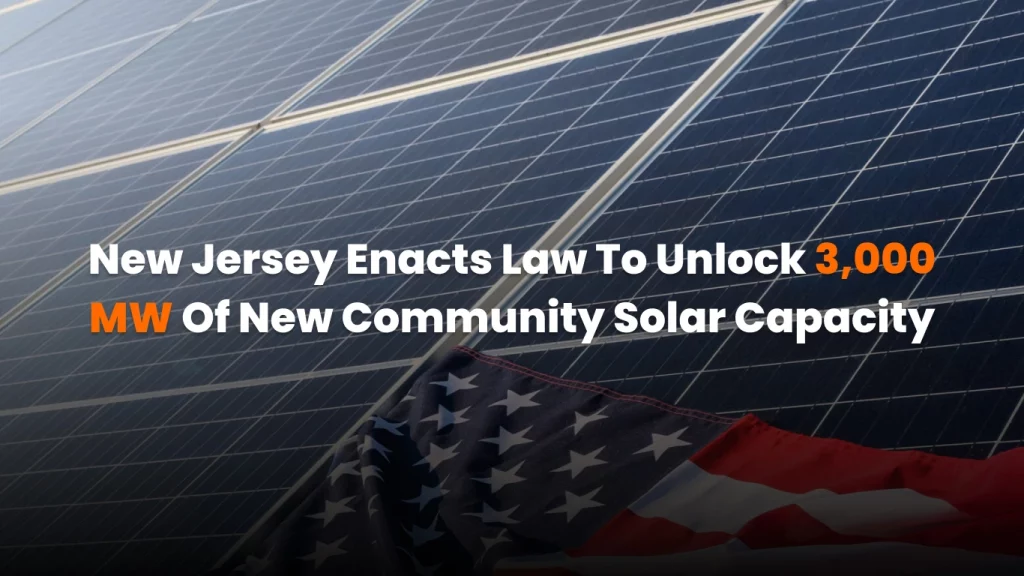In a significant development for clean energy expansion, New Jersey has passed legislation directing the state’s Board of Public Utilities (BPU) to authorize up to 3,000 megawatts (MW) of new community solar projects by August 1, 2025. The law, Senate Bill S-4530, which amends the Clean Energy Act of 2018, also removes an existing 150 MW annual registration cap, thereby vastly expanding the program’s potential scale and reach.
Strategic Expansion and Timeline
Under the new law, the BPU will accept registrations for community solar projects through December 31, 2029, or until the full 3,000 MW capacity is registered, whichever comes first. This reform acknowledges sustained high demand: in early 2025 alone, more than 650 MW had already been registered, with territories such as those served by PSE&G and Atlantic City Electric (ACE) becoming oversubscribed and closed to further participation.
Economic and Consumer Benefits
A recent evaluation by The Brattle Group projects that achieving the 3,000 MW threshold by 2030 would yield approximately $905 million in utility ratepayer savings in New Jersey, approximately $5 per month per household by 2031.
The Community Solar Energy Program (CSEP) enables residents, especially those unable to install rooftop panels, to subscribe to local solar generation and receive utility bill credits from it. To date, the CSEP has facilitated over $7 million in net savings for more than 28,000 subscribers.
Supporting Energy Equity and Accessibility
Legislators highlighted that the expanded program would enhance accessibility, especially for low- and moderate-income (LMI) residents and renters who often face barriers to solar adoption due to inadequate roof access or uphill cost challenges . The revised law simplifies income verification requirements and allows for self-attestation, easing participation for these demographics.
Building on Early Success
This latest expansion builds upon New Jersey’s earlier efforts to promote community solar. In January 2024, Governor Phil Murphy signed legislation (A4782/S3123) that transformed the program from a pilot into a permanent state initiative. That measure streamlined the application process, introduced consolidated energy billing, and prioritized program access for underserved communities, particularly LMI participants.
Broader Policy Context
As of April 2025, the BPU had already increased the CSEP capacity by 250 MW (DC) in addition to the previous 225 MW block, allocations divided among the state’s electric utilities: PSE&G, JCP&L, ACE, and RECO. The new legislation further accelerates this trajectory by removing annual caps and enabling large-scale deployment to bridge demand.
New Jersey’s legislation to permit 3,000 MW of new community solar capacity by 2025 represents a pivotal commitment to expanding equitable access to clean energy. By combining strong economic benefits, streamlined participation pathways, and elevated inclusivity, the law positions the state to substantially broaden its solar footprint and reaffirm its leadership in equitable renewable energy policy.
Sources
- Bill S-4530 details and expanded capacity provisions (New Jersey Senate Democrats, enviropolitics.com)
- Economic impact analysis by The Brattle Group (New Jersey Senate Democrats)
- Community Solar Energy Program enrollment, savings, and structure (njcleanenergy.com, enviropolitics.com)
- Prior legislation making program permanent and improving access for LMI users (NJ.gov, NJ Spotlight News, NJBIZ)
- Barriers to participation and simplification of verification for low-income residents (The Drone Life NJ, USA Solar Cell)




